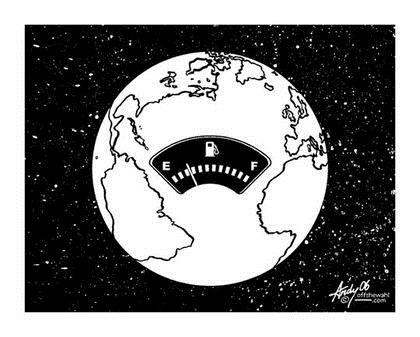Two Things are Missing from the Energy Independence Discussion
Throughout last week I watched with interest many reports and discussions about energy independence. Of course there are many sides to that story. Yes, like our forefathers, we need to free ourselves from the tyranny of countries that wish to destroy us. But we need to do it in a responsible, sustainable way.
 To me, U.S. energy independence is not about drilling or mining our finite natural resources. I believe renewables are the way to go, and that includes solar, wind and biofuel, as well as technologies that aren’t even here yet. But that’s not the whole story.
To me, U.S. energy independence is not about drilling or mining our finite natural resources. I believe renewables are the way to go, and that includes solar, wind and biofuel, as well as technologies that aren’t even here yet. But that’s not the whole story.
Greentech Media’s Stephen Lacey reported last week that “According to the IEA's (International Energy Agency) analysis, renewable electricity will surpass output from natural gas and double generation from nuclear by 2016, becoming the second-most important source of electricity behind coal.”
This is great news, indeed! But two things need to happen in order for this to be a truly sustainable path.
#1. Storage
We need smaller, higher-capacity storage cells. They are currently in development, but we are not there yet. Today’s batteries are too big, too expensive, not easily recyclable and take too much power to keep cool to be a useful, long-term sustainable solution.
But I’m not worried. There is more power today in the phone in palm of my hand than there was in a 1960s computer that was the size of my office. Someday renewable energy will be stored in units smaller than a car battery or in other ways, but hold many times more energy. Then we will be on our way to a sustainable solution.
#2. Building Energy Efficiency
If we do not reduce how much energy we need, we will never be able to produce enough.
I see this a lot when I consult with building owners and managers on reducing energy costs. Some think that of you install energy efficient HVAC equipment, or add solar panels, or stick a wind turbine on your property, you will have conserved energy and fulfilled your environmental obligation. But that is only part of the answer.
We must first consider the stock of existing buildings, some 15 million commercial and industrial buildings in the U.S. alone, and reduce the overall amount of energy they need just for their day-to-day operation. This can mean anything from changing light bulbs, to adding insulation, to all new windows and doors, to many more options that can best be discovered through a comprehensive energy audit.
Then we must build our new buildings - commercial, industrial, educational and residential - to higher standards that require less energy to run in the first place. This means more thought to the building envelope, i.e., better windows, better insulation, better roofing and better air sealing, as well as properly-sized HVAC systems, more efficient lighting, more efficient use of water and more.
ASHRAE and the ICC (International Code Council) have increased the stringency of building energy standards considerably over the past 10 years. Many other newer organizations, such as Architecture 2030, the US Green Building Council (USGBC), the Green Building Initiative (GBI) and others have been promoting sustainability issues beyond energy savings. But it is up to us, the people who live and work in these buildings, to do our part to conserve energy, to use less and to recycle more of what we use.
When the USGBC first began in the mid-1990s, they liked to say “Build Green – Everyone Profits.” This doesn’t apply only to the people who own the buildings – it applies to everyone on the planet.



